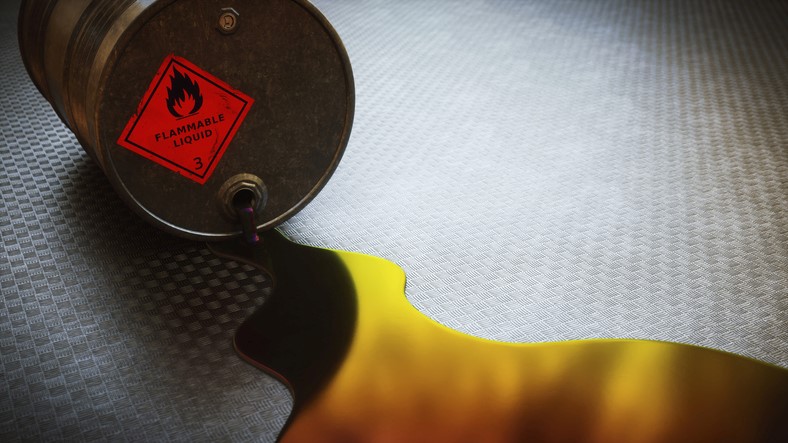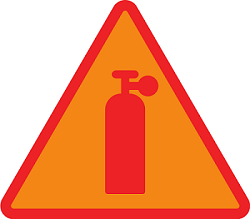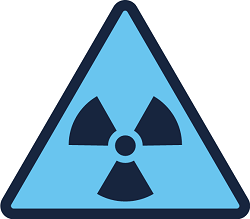1. Introduction
Attacks using chemical, biological or radiological (CBR) material have the potential to cause significant harm and disruption, but they are difficult for terrorists to carry out effectively and weaponising often require specialist knowledge and expertise.
Alternative methods of attack, such as explosive devices, are more reliable, safe and easier for terrorists to acquire or use. Nevertheless, it is possible that a terrorist group may seek to use chemical, biological or radiological material against the West in the future.
What is CBR?
Chemical | Poisoning or injury caused by chemical substances, including traditional military chemical warfare agents, harmful industrial or household chemicals |
Biological | Illnesses caused by the deliberate release of dangerous bacteria or viruses or by biological toxins, such as ricin, found in castor oil beans |
Radiological | Illness caused by exposure to harmful radioactive materials |
Within the wider definition of CBR, the term ‘white powders’ is also often used in relation to handling mail to describe the potential presence of a noxious substance (or hoax material) in a letter or parcel that is designed to cause significant harm or disruption.
2. CBR mitigation
Good general physical and personnel security measures will help to reduce CBR incidents. Apply appropriate personnel security standards to contractors and visitors, especially those with frequent access to your site.
Full CBR protection can be extremely expensive to implement, however, some measures that will help reduce the effects of a CBR event, can be put in place at relatively low cost.
The following first steps are recommended to increase resilience to a CBR attack:
- review the physical security measures relevant to areas of a building that due to their function, such as entrances, exits and windows may be at increased risk of attack
- review the design and physical security of air-handling systems, such as access to intakes and outlets, avoiding the use of ground level, or near ground level air intakes
- ensure CBR response is featured into the site’s major incident plans
- consider evacuation routes
- consider the use of pre-prepared messaging
- improve air filters or upgrade your air-handling systems, as necessary
- restrict access to water tanks and other key utilities
- review the security of your food and drink supply chains
- consider whether you need to make special arrangements for mail or parcels such as a separate post room, possibly with dedicated air-handling, or even a specialist off-site facility aware that mail rooms can be a high-risk area
3. Further information
For further information on the strengths and vulnerabilities of a site or building in relation to CBR threats, contact a local police CTSA. PAS 97: 2021 provides detailed information and best practice for handling mail and spotting ‘white powders’ and other threat items.
Note: For search and screening, as in many areas of physical security, knowledge of the threat material is key to an effective search regime. An awareness of CBR is essential, if this forms part of the search and screening process.
Go to PAS 97:2021 Mail Screening and Security specification
4. CBR recognition
As with other threat methodologies, no prior warning of a CBR incident may occur. An incident may be obvious, such as a corrosive liquid being thrown, at which point affected persons should be immediately directed to follow the REMOVE. REMOVE. REMOVE. protocol.
Obtain further information, evaluate and immediately inform the security supervisor or security control room. It is true that the exact nature of the incident may not be immediately obvious. For example, there may be multiple casualties for no apparent reason, in which case, use knowledge and experience of the working environment and its people as a recognition tool.
If you suspect someone has been exposed to a hazardous substance it is vital that the REMOVE. REMOVE. REMOVE. protocol is followed.
Other signs of a potential CBR hazard may be:
- individuals showing unexplained signs of skin, eye or airway irritation, nausea, vomiting, twitching, sweating, disorientation, breathing difficulties
- the presence of hazardous or unusual materials or equipment
- unexplained vapour, mist clouds, powder, liquids or oily drops
- withered plant life or vegetation
- distressed birds or other animals
- odd smells or tastes

The actions that are taken by building or site managers and security staff can, in the immediate moments following a CBR attack, have a very significant impact on limiting the effects of a CBR incident. Pre-planned actions focusing on limiting the effects of such an incident, such as briefing staff on the REMOVE. REMOVE. REMOVE. protocol will help to make sure that building occupants are protected as far as is reasonably practicable.
5. CBR response
In certain instances, it should be possible to provide a list of ‘immediate actions’ that staff and security staff should follow, to both mitigate the effects of a CBR attack and to summon the relevant emergency services response. It is strongly recommended that building or site managers and security staff are briefed on, and able to implement the REMOVE. REMOVE. REMOVE. protocol, it is the most effective method of limiting the health effects of a CBR incident.
In addition to the REMOVE. REMOVE. REMOVE. protocol, extra details of your plans and briefings to staff could include:
- where casualties will be told to go once removed from the affected area
- supplying absorbent materials, such as tissue paper
- supplying a corrosive treatment first aid pack
- the location of the closest available running water
To ensure that control rooms, other staff and emergency services are given the correct information relating to a CBR attack, the following ETHANE format can be used:
- E – Exact location of the incident
- T – Type of incident – C or B or R
- H – Hazards present or suspected
- A – Access. Safest route to use
- N – Number, type and severity of any casualties
- E – Emergency services – present and those required
This protocol, which has been adopted by all of the emergency services, is a response to all types of major incidents which includes hazardous material exposure, including corrosive (acid) attacks.
The emergency services should always be called following the existing notification mechanism (e.g. via security control), and their advice followed. Tell the emergency services that you are implementing the REMOVE. REMOVE. REMOVE. protocol, if appropriate.
If first aid is needed, consider that assisting other affected colleagues may mean more people become contaminated.
Contact with affected persons and their property should be avoided, and everyone present should refrain from eating or drinking.
Examples of actions which may be relevant include:
- call the emergency services and follow their advice
- where a hazard can be isolated by leaving the immediate area, do so as quickly as possible, closing doors and windows as you go
- move those directly affected by an incident to a safe location (i.e. away from the incident or source of contamination). If safe and practical to do so a safe location should be selected to minimise the spread of contaminants from the scene of the incident
- separate those directly affected by an incident from those not involved to minimise the risk of inadvertent cross-contamination
- ask people not to wander off – though you cannot contain them against their will
- stay in a safe location and await medical assistance – medical assistance will come to you, so avoid seeking hospital care
- the emergency services will take responsibility for treatment of casualties beyond the normal first aid provisions provided
- when the emergency services arrive, act upon their instructions as you may need further decontamination and medical help
- if external windows are not permanently sealed shut, develop plans for closing them in response to a warning or incident
- examine the feasibility of emergency shutdown of air-handling systems and ensure that any such plans are well rehearsed
The exact composition of the ‘immediate actions’ will vary from location to location, and in some circumstances an action that may be appropriate for one place may be inappropriate for another. It is strongly recommended that users get to know their building and procedures in preparation for developing a list of immediate actions.
Consultation with the building services manager is essential if you are considering altering the state of your heating, ventilation and air conditioning systems, as part of a CBR response, as this may not be possible or appropriate.
In developing a CBR response strategy it is important to consider other emergency response plans such as fire evacuation, may already exist within your organisation, to ensure there are no conflicts.
See our guidance in printable, poster format to easily advise others with actionable information:



